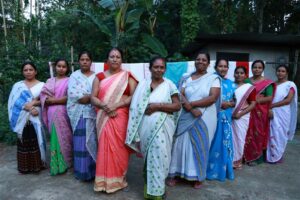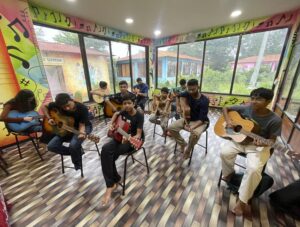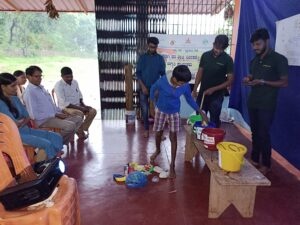In the heart of rural India, where agriculture is not just a livelihood but a way of life, millions of farmers still rely on inherited wisdom and gut instinct to manage their crops. But in today’s world of climate uncertainties and rapidly evolving pests, such traditional methods are no longer enough.
Atendra Kumar Verma, a small-scale farmer from Barabanki, Uttar Pradesh, recalls how he used to manage his field. He mentioned he would just walk around and look for signs like yellowing leaves or pest damage. But by the time he spotted something, it had already spread.
This daily uncertainty is a common reality for India’s farming community until two aeronautical engineers, with no background in agriculture, decided to step in and change the script.
When Engineers Took Root in Agriculture
Amandeep Panwar from Delhi and Rishabh Choudhary from Allahabad were never meant to be farmers. As students at Dr. APJ Abdul Kalam Technical University in Lucknow, their world revolved around drones, circuits, and flight paths. Barabanki’s open fields, close to their campus, served as an ideal testing ground for their drone experiments.
What began as a technical hobby slowly evolved into a mission. After observing the challenges farmers faced firsthand, the duo began exploring how aerospace technologies like hyperspectral imaging — typically used in space research — could be applied to detect early signs of crop stress.
The Birth of BharatRohan: Precision Farming from the Sky
In 2016, just a year after graduating, Amandeep and Rishabh founded BharatRohan, an agri-tech startup dedicated to empowering smallholder farmers using drone-based remote sensing. They started with just 42 farmers across six tehsils in Barabanki, offering drone scans to detect early signs of pests, disease, and nutrient deficiency.
Initially, the effort faced logistical hurdles. Each drone could cover only a few acres at a time, and traveling between far-flung farms was time-consuming. The solution? Cluster farming. By focusing on 100–150-acre clusters within a single village, drone efficiency improved and farmer engagement deepened.
With hyperspectral imaging, BharatRohan could tell farmers precisely what their crops needed. But there was a problem — the recommended inputs, such as micronutrients or bio-sprays, were often unavailable in local markets. Recognising this critical gap, they launched their own line of biological agri-inputs under the brand Pravir.
Products like Silvershakti, Humeshakti, Jadshakti, and Immunoboost support BharatRohan’s integrated crop management model, which promotes biological and mechanical solutions before chemical interventions. The aim wasn’t just to detect problems — but to solve them sustainably.
The duo’s inspiration came from high-tech applications they had studied, notably how ISRO’s Chandrayaan mission used hyperspectral imaging to map minerals on the moon. BharatRohan adapted this same technology for farmlands, helping farmers detect issues weeks before visible symptoms appeared.
This early detection reduces pesticide use, cuts costs, and leads to healthier crops.
Smart Farming, Simplified for Real Farmers
While the backend of BharatRohan’s system is sophisticated, the front end is farmer-friendly. An initial attempt at a mobile app had low traction, so they pivoted to WhatsApp-based advisory services. Farmers now receive timely updates in local languages, along with visual field maps and support from field executives.
A chatbot answers routine questions, while trained agronomists offer personal guidance, ensuring even farmers unfamiliar with tech benefit from cutting-edge tools.
Scaling Up: 50,000+ Farmers, Seven States, One Vision
Today, BharatRohan operates in seven Indian states — including Uttar Pradesh, Rajasthan, Maharashtra, Madhya Pradesh, Telangana, Andhra Pradesh, and Meghalaya — with Tamil Nadu soon to follow. Their services cover over 200,000 acres, reaching more than 50,000 farmers.
Their team of 70 includes drone pilots, agronomists, and remote sensing experts, offering services that range from basic crop alerts to full-scale input support and market linkage, priced affordably between ₹400 to ₹1,200 per acre per season.
–inputs from The Better India





